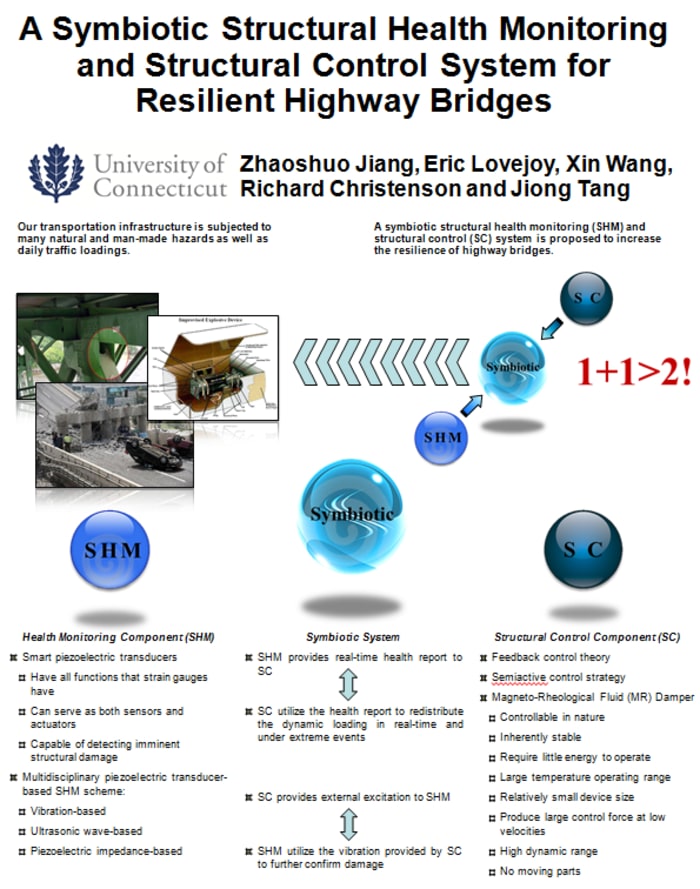A Symbiotic Structural Health Monitoring and
Structural Control System for Resilient Highway Bridges
Our transportation infrastructure is subjected to many natural and man-made hazards as well as daily traffic loadings. For this reason, a symbiotic structural health monitoring and structural control system is proposed to increase the resilience of highway bridges. This system will integrate two popular yet separately pursued approaches, namely structural health monitoring and structural control, to increase safety and performance for highway bridges.
The health monitoring component of this proposed system utilizes smart piezoelectric transducers for automatic structural damage detection. Besides acting as strain gauges to sense local deformation/strain, the piezoelectric sensors have unique advantages for damage detection and identification. By using state-of-the-art piezoelectric damage detection methods, such as vibration-based, ultrasonic wave-based and impedance-based approaches, the health of local and global areas of the structure can be reported in real-time.
The structural control component of this system employs feedback control theory using dynamic sensor measurements and Magneto-Rheological (MR) fluid dampers to provide controllable damping forces. The damper forces can reduce bridge responses to a range of dynamic excitations including daily traffic loadings, natural and man-made hazards as well as provide the capability to redistribute forces throughout the structure to reduce stresses after damage.
Besides the independent benefits of structural health monitoring and structural control, the proposed integrated system leverages these systems and provides the capability to control the resistant forces in real-time according to the status report supplied by the health monitoring system. It also has the ability to use the MR dampers to produce external excitations, providing vibration based input to help the health monitoring system further confirm the damage.
The proposed symbiotic system would be highly marketable to the U.S. and internationally to departments of transportation. The proposed symbiotic structural health monitoring and structural control system as well as each of its individual parts is both innovative and unique. Structural health monitoring systems using other types of damage detection techniques as well as a number of control devices are currently commercially available, but the specific technologies presented have yet to be implemented, and furthermore, not in conjunction with one another.
While the concepts of structural health monitoring and structural control have been demonstrated independently on bridge structures, a symbiotic system such as this has yet to be demonstrated. The next steps recommended to move this technology closer to commercialization would include experimental verification of the proposed methodology on a laboratory test-bed (in a controlled environment) followed by the deployment on an actual highway bridge to serve as a demonstration project.
Voting
-
ABOUT THE ENTRANT
- Name:Zhaoshuo Jiang
- Type of entry:teamTeam members:Zhaoshuo Jiang, UConn
Eric Lovejoy, UConn
Xin Wang, UConn
Richard Christenson, UConn
Jiong Tang, UConn - Profession:
- Number of times previously entering contest:never
- Zhaoshuo belongs to these online communities:ASME, ASCE
- Hardware used for this entry:Piezoelectric transducer; Magneto-Rheological fluid dampersSoftware used for this entry:Matlab
- Patent status:none

